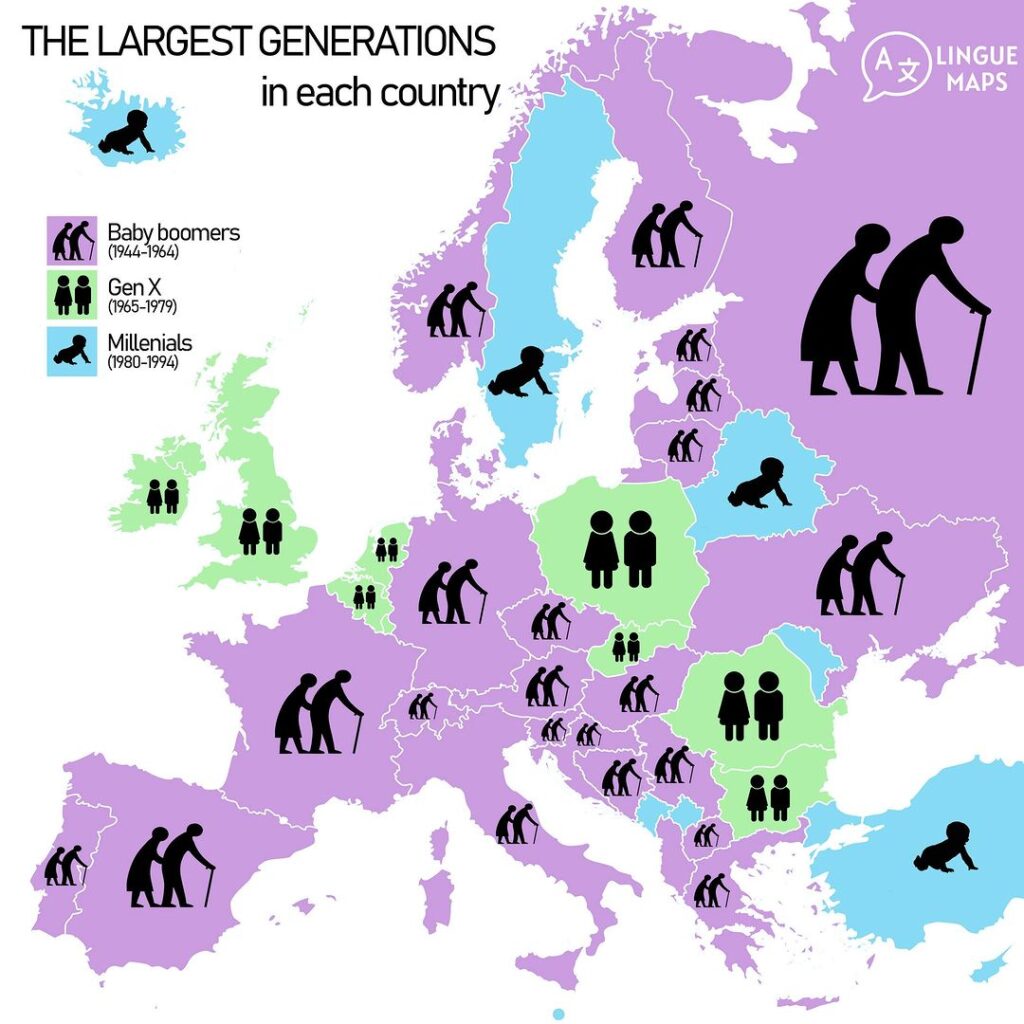Generations Across Europe: A Geographic Perspective on Societal Shifts

Europe stands as a fascinating mosaic of generational experiences, where national borders intersect with demographic patterns that reveal deep insights into societal evolution. The map of generational distribution across European countries offers a compelling narrative of how different age groups have shaped and continue to influence the continent’s cultural, economic, and social landscapes.
The Generational Breakdown: More Than Just Numbers
The generational map presents an intriguing snapshot of demographic diversity. Boomers, those born between 1944 and 1964, dominate a significant portion of European countries, including major economic powerhouses like Germany, France, and Italy. These nations carry the legacy of post-World War II reconstruction and economic expansion, with generations shaped by periods of remarkable social and technological transformation.
Boomer Nations: Foundations of Modern Europe
Countries with predominant Boomer populations represent the backbone of European economic and social structures. This generation witnessed extraordinary changes – from the Cold War’s conclusion to the rise of the European Union. In nations like Croatia, the Czech Republic, and Spain, Boomers have been instrumental in rebuilding national identities and driving economic modernization.
Their characteristics typically include:
- Strong work ethic developed during economic rebuilding periods
- Preference for traditional career paths and hierarchical structures
- Value placed on stability and long-term planning
- Significant political and economic decision-making influence
Gen X: The Bridging Generation
Countries such as Belgium, United Kingdom, and Poland represent the Gen X demographic majority. Born between 1964 and 1979, this generation uniquely bridges analog and digital worlds. They experienced the transition from traditional communication methods to the early internet age, developing remarkable adaptability.
Gen X is characterized by:
- High technological adaptability
- Entrepreneurial spirit
- Work-life balance consciousness
- Skepticism towards institutional structures
- Critical thinking developed during significant geopolitical transformations
Millennials: Europe’s Digital Pioneers
In countries like Belarus, Cyprus, and Sweden, Millennials form the generational majority. Born between 1980 and 1994, they are characterized by their digital nativity, global connectivity, and different approach to work and social structures.
Millennial traits include:
- Strong digital literacy
- Preference for flexible work arrangements
- Higher education levels
- Global and multicultural perspectives
- Emphasis on personal fulfillment over traditional career paths
Future Projections: Generational Dynamics in Transition
Demographic trends suggest a significant shift in the coming decades. Aging populations in Boomer-dominant countries will gradually transfer leadership roles to Gen X and Millennials. This transition promises profound changes in:
- Political decision-making
- Economic strategies
- Social welfare systems
- Technological innovation
Experts predict increased integration of digital technologies, more flexible work models, and a reimagining of traditional societal structures.
For those fascinated by maps, we’ve curated some engaging map posters of Europe available on Amazon:
- Maps International Large Political Europe Educational Wall Map Poster
- Europe Wall Map GeoPolitical Edition by Swiftmaps
- European Population Trends Visualization
We’re curious about your perspective! Which generation do you belong to? How do you see your generation’s impact on society? Share your insights in the comments below and let’s start an engaging conversation about generational dynamics across Europe.








